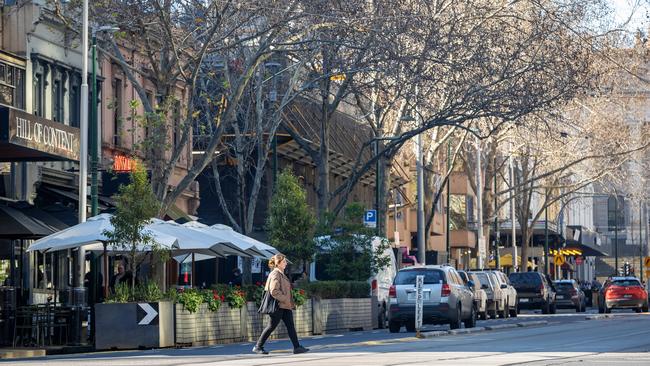Housing Minister Harriet Shing casts doubt over plan to transform CBD offices to 12,000 homes
A plan to turn CBD offices into 12,000 homes amid the state’s housing crisis is now in doubt — but the Allan government is still refusing to encourage workers to return to the office.

Victoria
Don't miss out on the headlines from Victoria. Followed categories will be added to My News.
A bold plan to convert CBD offices into more than 10,000 homes amid the state’s housing crisis is now in doubt, with industry groups warning a reluctance to act could put the city’s future at risk.
The state government pledged last year to explore retrofitting 80 office buildings in Melbourne’s CBD to generate 10,000 to 12,000 apartments and mixed-use properties, as part of its centrepiece housing policy.
But Housing Minister Harriet Shing on Thursday, almost a year after the release of the housing statement, said there were buildings where “retrofitting and upgrading is just not possible”.
“We know that the cost of retrofitting will vary from property to property, from building to building,” she said.
Ms Shing pointed to public housing towers as an example, saying it would “cost billions of dollars to upgrade and to retrofit those particular tower sites”.
“That would not actually make the buildings wonderful places to live, but would simply make them habitable,” she said.
The senior minister was asked three times whether it was still the plan to retrofit CBD office towers, but Ms Shing refused to give a straight answer.
“We’re exploring every opportunity to bring additional housing,” she said.

It came after the Herald Sun on Thursday revealed that Melbourne’s CBD now has the highest office vacancy rate in the nation, increasing to 18 per cent over the six months to July, up from 16.6 per cent in January, according to new data from the Property Council of Australia.
Despite the vacancy rate, Ms Shing refused to encourage workers, particularly public servants, to make a return to the office.
“It is a matter for workplaces as to how they deploy their workforces,” she said.
But Lord Mayor Nick Reece called on the state government to do better.
“At the City of Melbourne, we expect people to work from the office, while also implementing modern flexible arrangements for those who need it,” he said.
“I would strongly encourage both the state and federal governments to adopt this approach.”

Ms Shing’s comments came as a shock to Property Council of Australia Victorian executive director Cath Evans, who questioned the Allan government’s plan to revitalise the CBD.
“It is very disappointing to me that there is not a future focus for the city,” she said.
Ms Evans said the property industry had laid the ground work for the conversion of vacant CBD office towers to thousands of homes, but the government was yet to act.
“There’s been a lot of background work that has been undertaken by many members in the sector who have been working tirelessly around this project to identify those buildings,” she said.
Ms Evans said the government needed to come to the table with a range of incentives, including tax relief and changes to planning processes, to enable the transition.
She said there was “clearly” more work that needed to be done to attract public servants back into the office in accordance with the three days-a-week directive.

Real Estate Institute of Victoria president Jacob Caine agreed, saying the government “must draw people and business back into what used to be the beating heart of Victoria”.
“It is critical that the government doesn’t sit idly by and let the CBD continue to deteriorate,” he said.
Mr Reece added that it was time to “set a new direction” when it came to repurposing older office and commercial buildings.
Town Hall will soon host the Melbourne economic growth and revitalisation forum – a Property Council of Australia initiative – to kickstart the discussion.
“If we identify we want to turn these vacant office floors into spaces for creative, education, health, education or housing, we will have the right people in the room to get it done,” Mr Reece said.
“The City of Melbourne will soon be releasing guidelines for developers and the property sector to help facilitate more retrofit projects, with environmental sustainability in mind.
“This project is a win-win: buildings will get a new lease on life and the city will benefit from cleaner, more energy efficient commercial buildings.”




